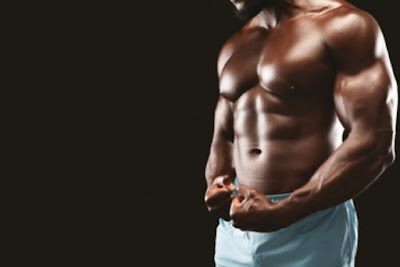Often I hear concerns like this, "Coach except the burden of the increase continues, I will be stronger continue, later in the old muscle to grow dong? I am not becoming a gede-Gede, "which comes from women (including Indonesian Fitness clients). But, does this concern have a strong and true basic? What exactly is the stronger we automatically get more muscular or muscular we will grow?
Often (unfortunately more often than it should be), "increasingly strong" is identified together with a sign of "muscle mass growth" and indeed, such associations are available. "Increasingly strong" can be a sign of "muscle mass growth". However, both associations are not exclusively shaped. In short, "getting stronger" does not necessarily mean "increased muscle mass". Increasing muscle mass (the Isitlahnya hypertrophy) is much more complex than just "getting stronger" even though strength or "increasingly strong" also takes use of the process.
To illustrate that the interlacing of "getting stronger" and "increasingly muscular" is not exclusive and definite, Enoka, in his research report in th. 2008, citing 8 mechanisms or neurological reasons that are very likely we are so stronger added without being accompanied with increased muscle mass (1). Here are the 8 mechanisms:
1. The increase in the intensity of the contraction sign comes from the central nervous system to the trained muscles. It is demonstrated in research through an imaginary contraction method, where the subject only thinks of the specific muscles in the contraction body. It was found that a stronger subject (not always more muscular) resulted in a stronger "imaginary contraction signal".
2. Decreased co-activation of antagonistic muscles. With this decrease, the agonist muscles we train can contract together more efficiently.
3. Enhanced agonist and synergistic muscle activation, which is the muscle that supports the agonist muscle contraction we are targeting or we are training.
4. Improved "coupling" between spinal cord cells so that the sign of contraction can be passed from the central nervous system to the muscles together more efficiently.
5. The enhancement of muscle activation in general, which appears in the joint study enables EMG (electromyography).
6. Increased sensitivity of connection to the motor nerve in order to be together with a contraction like the strong, nerve motors that move the muscles can operate together more effectively.
7. Improved synchronization of the muscle cell unit motors so that the sign of contraction could be translated into the actual muscle contraction together more efficiently.
8. Changes to the "decay rate" or the rate of decreasing the mark to the nerve cells in order to lose the intensity of the mark while flowing comes from the central nervous system to reduced muscle cells.
Furthermore, the interwoven on "getting stronger" and "increasingly muscular" is also enticed by the exercise history. Increasing strength or "getting stronger" without the muscle growth occurs most commonly in the early moments we start a joint weight training that is serious, consistent, and precise (2). The more our bodies are effective and effective in carrying out a specific exercise movement, which means that the more effective and efficient the neurological aspects of our body in carrying out the exercise movement, the higher the trend of increasing Strength coupled with muscle growth.
On the other hand, Charles Poliquin used to declare while I was attending his seminar in Melbourne, Australia that it needed not enough 1000 reps along with appropriate techniques to increase the efficiency and effectiveness of the body in carrying out a Special movements as much as 1%. So, it will take a while that really long before it will "get stronger" will always mean "increasingly muscular"
If observed derived from the reality, if strength is the only aspect in increasing muscle mass, then the world of bodybuilding will be dominated by powerlifters in Powerlifters on most more powerful comes from bodybuilders. If that were the case, bodybuilders would have to practice like a powerlifters to catch up on their muscle mass growth. In fact, we are obviously not the case. The real powerlifter is mostly more powerful, but bodybuilders are inclined to have more advanced muscle mass growth.
Both powerlifters and bodybuilders have a general level of capability and body shape but the difference in their exercise patterns happens for a reason. One is that strength gains do not necessarily mean muscle gain.

No comments:
Post a Comment